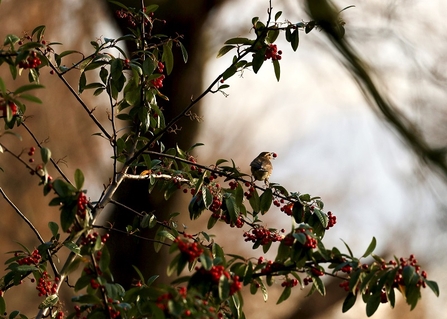Redwings, red berries and away again
Last weekend I was interrupted, whilst making coffee, by a high-pitched jinking sound. Looking outside at a stand of bare-naked ashes, I saw six or seven redwings flitting through the branches, occasionally dropping down to pluck at fat ivyberries snug near the ground. Some nestled in the crown of a pollarded pear tree, seemingly warming in the morning sun, despite the bitter cold. This was the first time I’d seen redwing from the flat window since moving to Sydenham in 2011. They hung around all day, and later on I saw a few more spiralling in and around a garden hedge, snatching the clementine-coloured berries of pyracantha and cotoneaster. By the time the snow had gone on Monday, the redwings and their delightful tinkling had melted away too.

